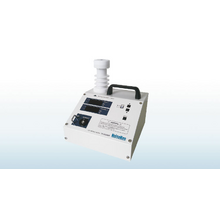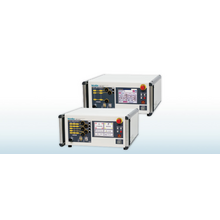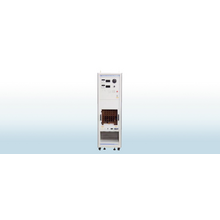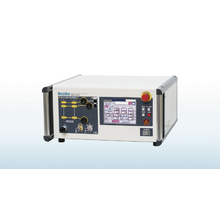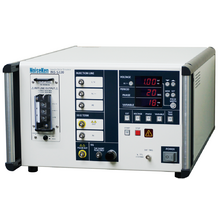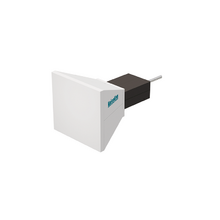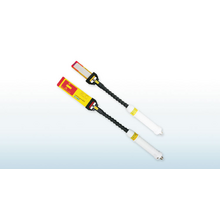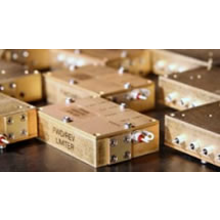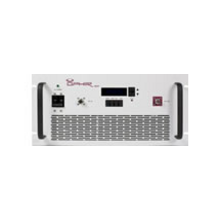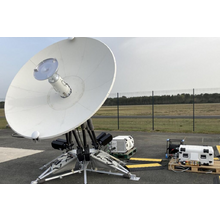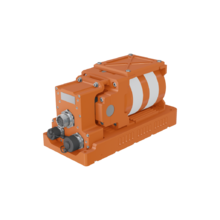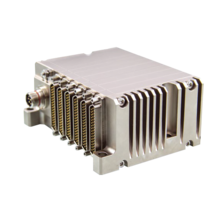Products
Displaying 553 - 564 of 835
The ESD voltage meter MODEL: 18-00086B is a device that can measure the voltageholding time (holding voltage after 5 seconds) and output
specifications during the air discharge test in IEC 61000-4-2.The measured voltage is displayed on a 7-segment LED with peak and holding voltage values.
Easily measure the Hold Time, the tester specification for air-discharge testing.
Measure the output voltage from ±2kV to 30kV.
Monitor the measured voltage waveform by connecting to an oscilloscope.
Compact, lightweight and easy to carry.
IEC 61000-4-4 Ed.3 standard compliance.
Pre-check function is installed. Inspection before testing is now easy.
Normal mode test support. Taking account of field troubles is possible. (option)
Utilize an outlet box that simplifies EUT connection. (option)
Compared with conventional products, the size has become compact. (Approximately 67% by volume)
Easy to understand Panel display reduces mistakes in connecting power cables.
Software control with Windows. (option)
Next calibration date can be notified. (Windows software only)
Employ LCD screen with multi-language support and enhanced operability.
Reproduces transient voltage surge phenomena generated in a vehicle and evaluates the immune resistibility of DUT against the surge. The output waveforms are five as high-repeating pulse, giant pulse, field decay pulse, trapezoidal waveform + high-repeating pulse and high repeating pulse + giant pulse.
This model is for carrying out a high pressure noise test of individual automotive manufacturers' demands. It simulates representative high voltage noise of HV and EV.
Single-phase 3 wire
AC85 - 240V16A
50/60Hz
DC125V16A
Pulse: ~ 500V 50kHz (option)
NoiseKen simulators to reproduce fast rise-up noises which are generated when switching ON / OFF electric current on the inductive load.
Since the pulse includes broadband frequency and its rise-up time is fast at 3ns or less, it can make the noise coupling dense and effective to reproduce the malfunctions of electronics equipment under the test.
It can realize performance evaluation of electronics equipment's upon reproduction of line noises which are intruded to the power supply lines or induced noises onto the telecommunication lines.
The TEM horn antenna is an antenna used for conducting close proximity radiation immunity evaluation test (near electromagnetic field immunity test) of electromagnetic waves radiated from various wireless transmitters such as mobile devices.
In the future, close proximity radiation immunity evaluation test using the TEM horn antenna is expected to expand to various product standards such as medical equipment (IEC 60601-1-2) and multimedia equipment (CISPR 35).
NoiseKen's TEM horn antenna has a wide band, low VSWR, and wide electric field uniformity offering an ideal solution for an efficient close proximity radiation immunity test.
Thin plate broadband antenna has been developed for efficient immunity testing against hand-held transmitters and cellular phones. Many pieces of spot frequency antennas had to be used in turn thus fur. This new Thin-plate Broadband Antenna is a single antenna solution eliminating the need for antenna changes and dramatically reducing the test time. Furthermore, this antenna with its small-size and lightweight properties and a flexible handle is suitable for testing in narrow spaces.
Modules are usually smaller and are usually part of systems. You supply your own DC voltage, make the connections and supply your own DC supply. Modules are available with or without heatsinks and fans. Amplifiers Modules are available in both Broadband and Band-Specific frequencies. Modular design concepts save time and money, and are lightweight, reliable, cost-effective solutions. We are well-known in the industry for successfully adapting our amplifiers or custom designing new solutions to suit each unique project. Please refer to our Adapted & Custom Design Solutions link to begin formulating your performance objectives and other criteria.
Systems are complete. They plug into an outlet and are ready to go. Our standard systems are 3U, which is 5.25″ and 5U, 8.75″. Systems are available with or without IEEE-488, RS-232 and Ethernet connectivity. Amplifiers Systems are available in both Broadband and Band-Specific frequencies. We are well-known in the industry for successfully adapting our amplifiers or custom designing new solutions to suit each unique project. Please refer to our Adapted & Custom Design Solutions link to begin formulating your performance objectives and other criteria.
ARES (formerly IRIS) from Safran Defense & Space, Inc. (formerly Safran Data Systems, Inc.) represents the next-gen in transportable antenna systems. Packed in portable cases for easy handling, ARES can be shipped using standard methods and be fully operational in under an hour in the field, standing by to support satellites. Utilizing a reliable pedestal design and a dual-band concentric feed, ARES antenna ensures pinpoint accuracy and top-notch antenna performance. Crafted from standard (LRU) parts, it’s a breeze to maintain and service on-site, guaranteeing maximum uptime for all satellite missions.
The B.SAFE is a crash-survivable flight data recording for board defense aviation aircraft and helicopters.
B.SAFE is designed to capture audio, video, and data on a Crash Survivable Memory stored in a rugged and highly compact chassis. You can easily replay the recorded data in a standard PC/Windows® environment using post-mission analysis software.
With its compact and rugged design, CMA is a perfect fit for data acquisitions in challenging environments and tight spaces.
CMA boasts the smallest size per channel, providing versatile acquisition modules to customize instrumentation for specific missile or New Space use cases. These acquisition modules enable software configuration in the field for each channel type.
Offering on-board processing, recording, hardware customization, GPS localization, and a built-in transmitter, CMA allows for an all-in-one-box solution.
